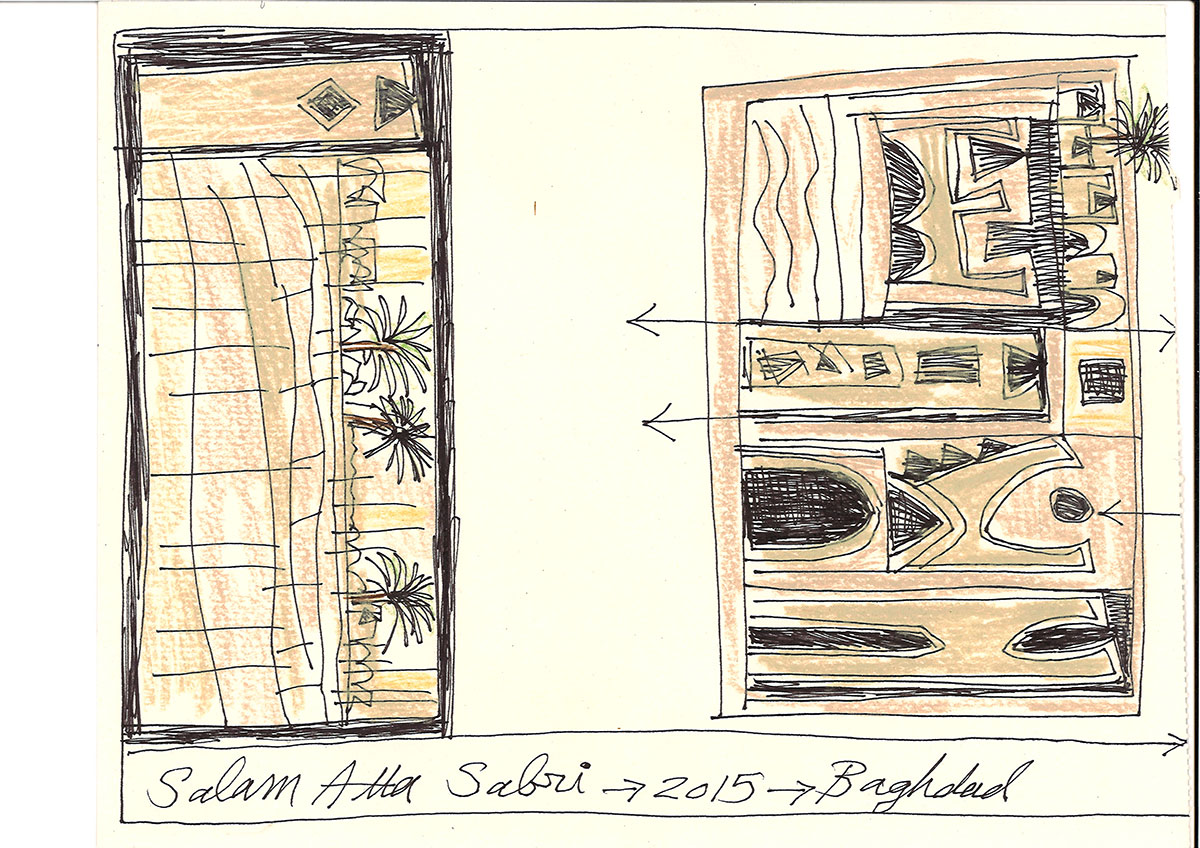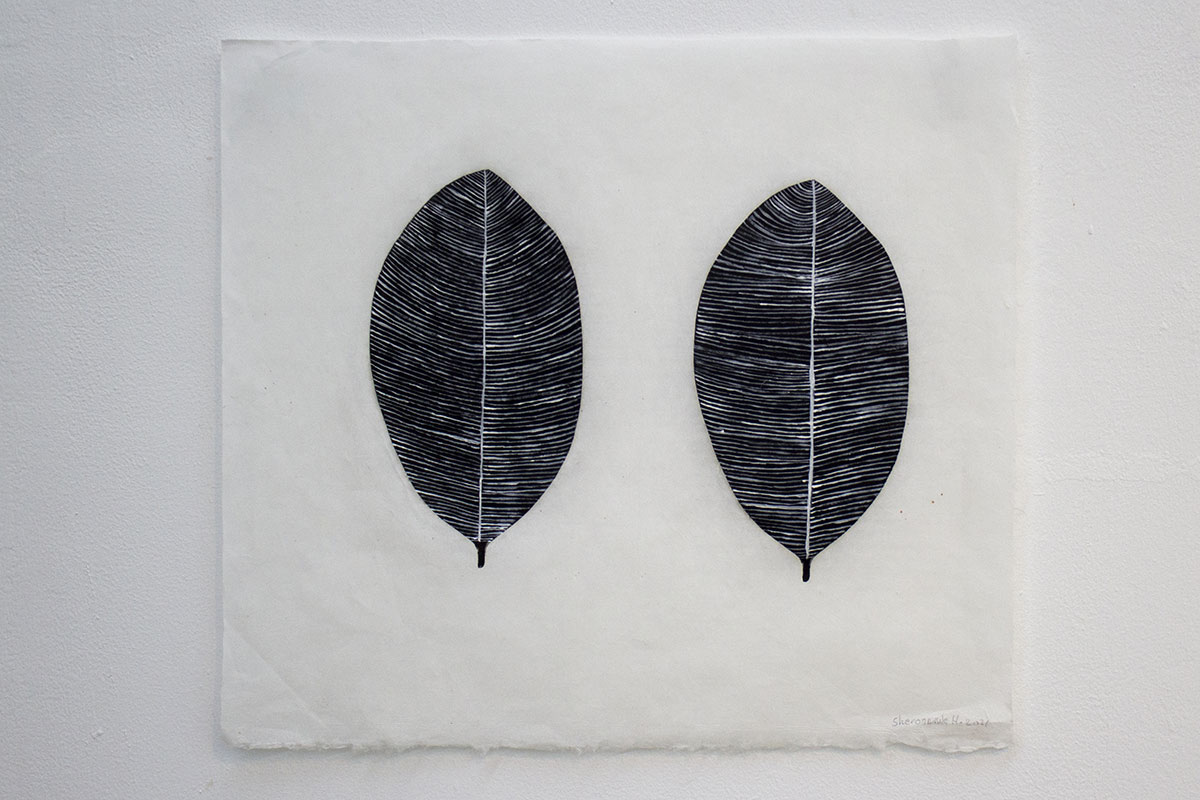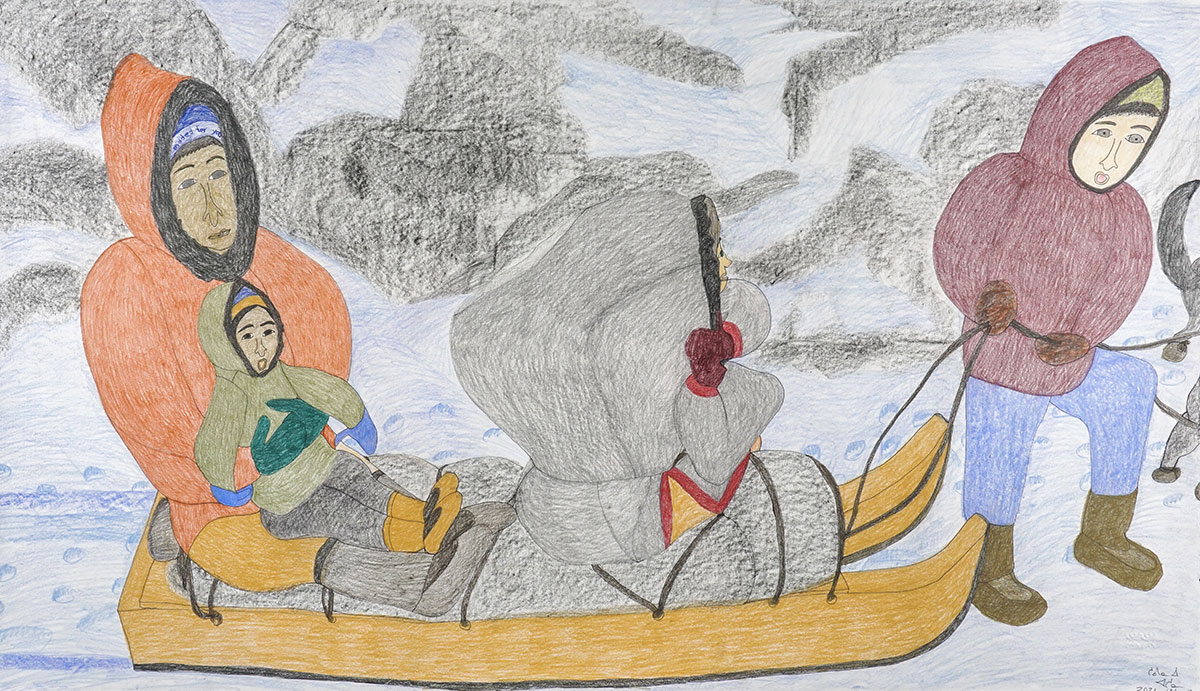PRESENTATION: Splendid Isolation, Part II
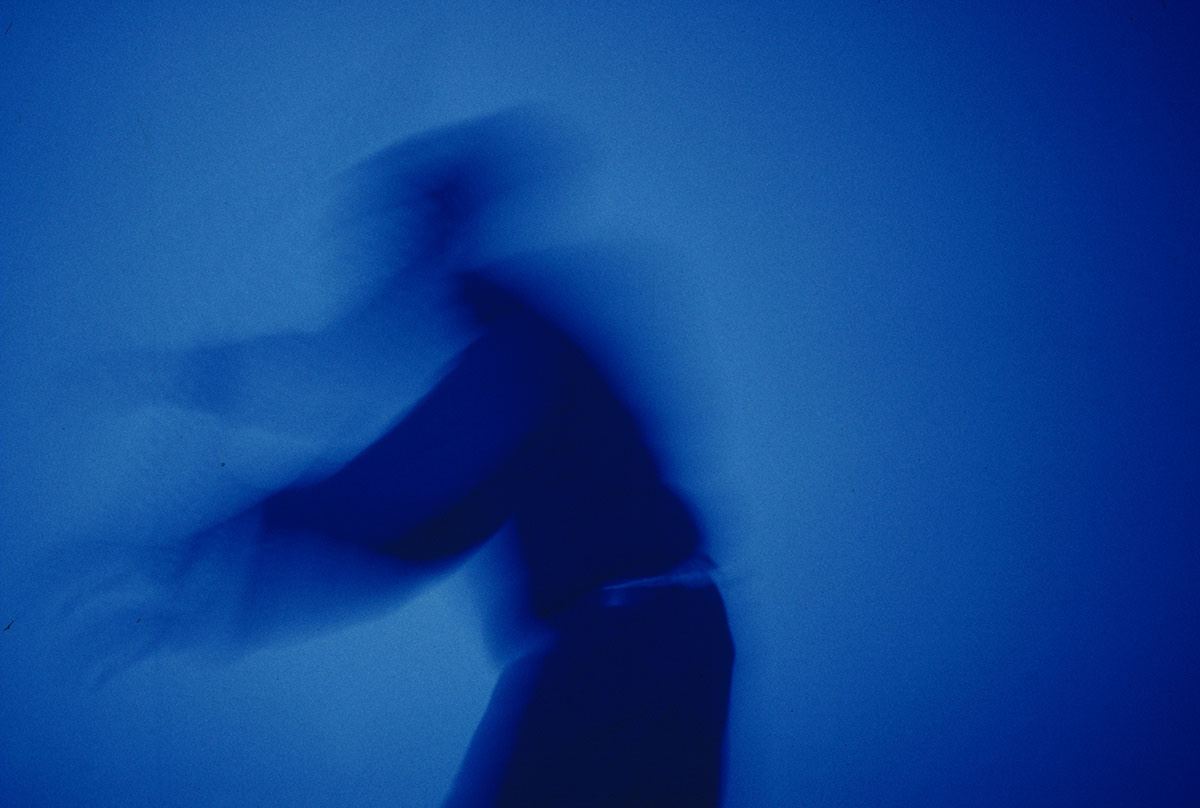 The exhibition “Splendid Isolation” explores the conditions of working in isolation and brings together 22 international artists from a variety of backgrounds. They are living with social limitations within their own community, have chosen to isolate themselves, or were sometimes brutally cut off from their environment. How does a life in isolation feed these artists’ creative impulses? Survival instinct, escapism or resistance leads them to create striking artworks that explore the boundaries of human freedom. Many of the artists are exhibiting their work in a Belgian museum for the first time (Part I ).
The exhibition “Splendid Isolation” explores the conditions of working in isolation and brings together 22 international artists from a variety of backgrounds. They are living with social limitations within their own community, have chosen to isolate themselves, or were sometimes brutally cut off from their environment. How does a life in isolation feed these artists’ creative impulses? Survival instinct, escapism or resistance leads them to create striking artworks that explore the boundaries of human freedom. Many of the artists are exhibiting their work in a Belgian museum for the first time (Part I ).
By Dimitris Lempesis
Photo: S.M.A.K. Archive
The COVID-19 prompted the exhibition “Splendid Isolation”. We need to go a long way back in time to find an event that everyone underwent on a global scale. The hard lockdown of 2020, a forced temporary confinement, made us seek out artists who work in or out of various forms of isolation. Since we are obliged to live in state of isolation ourselves, as spectators we are closer that we will ever be to sharing these artists’ experience. Living in silence can be considered an advantage or even a necessary prerequisite for creation. Yet a life in total isolation has today become almost unthinkable. In a globalised world, with its deeply anchored network structures, life is steeped in interaction, visibility and connectedness. In these current circumstances, personal retreat and escapist longings often closely paired with the decision to live sustainably or self-sufficiently. Although isolation can also be prompted by a fundamental dissatisfaction with an unjust political system. Other artists are forced to create work in sometimes harrowing circumstances, as they are obliged to live in solitary or collective isolation due to geographical, political, cultural or biological factors. They have no choice but to rely on their personal skills and imagination to protest against inequality and oppression. Whether they are trapped in their own mental space, displaced, imprisoned by a political regime, or limited by socio-cultural or gender-related systems. In his practice, Adrien Vescovi works with fabrics that have been infused with natural pigments by the elements, or with his own concoctions incorporating herbs, bark, spices and leaves. Analogous to alchemic processes, he sometimes immerses the textiles in baths with different maceration and infusion periods. Even after these long and labour-intensive treatments, the works continue to be at the mercy of their environment, leading to the development of multiple temporal layers. The resulting traces are comparable to a memory that collects and associates different impressions of reality.
Asim Abu Shakra was one of the few Palestinian artists who was accepted into the painting at the Kalisher Art Academy. At the time, it was not easy for a Palestinian artist to live and study in an Israeli city and Shakra ended up living almost two years in a sleeping bag in the turpentine-smelling paint studio of the school. In his life and work, Asim Abu Shakra experienced the conflict between his Arab and Israeli identities. The figure of the cactus is central to his visual language and reflects one of the personal stories of his life in Tel Aviv when one day he saw a potted cactus on a windowsill. The plant had been separated and removed from the wilderness and placed in a pot on the windowsill just like him, a Palestinian living in the Israeli capital. The feelings of alienation and non-belonging expressed in Shakra’s work are familiar to many exiled or internally displaced Palestinians. The thorny plant became a popular symbol of Palestinian identity as it is known for its tenacity and deep roots. David Byrd was an American artist born in Springfield, Illinois. He spent most of his creative life living as a recluse in upstate New York. Although he was extremely prolific, he rarely showed his work to anyone and only exhibited publicly a few months before his death in 2013 at the age of 87, following a chance encounter with a neighbour. His work has since been exhibited posthumously through the establishment of the David Byrd Estate. Dom Sylvester Houédard was a monk, theologian and artist, born in 1924 in Guernsey and educated in Rome and Oxford. Houédard served in the military intelligence of the British Army before becoming ordained as a Benedictine priest in 1959 at the Prinknash Abbey in Gloucestershire. Houédard wrote widely on new approaches to spirituality, philosophy and art and soon became a cult figure in London’s counter-culture of the 1960s and a leading authority on the Beat movement. His abstract visual poems were created on an Olivetti Lettera 22 typewriter which he started to experiment with while still working for the army. Houédard, also known by his initials dsh, was a pioneer in the emerging concrete poetry scene and his interests reached far wider than those normally associated with a monastic priest.
Irma Blank was born in Northern Germany and moved to Italy in her early twenties. Her oeuvre unfolds via a series of central lines like a solitary journey through the complex relationship between writing and image. She develops her own drawing systems that attempt to transcend the limitations of a verbal language and to communicate visually. Instead of using words to express meaning, the artist explores ways in which marks can portray existence and the passing of time in a universal manner. Her practice, which is fully immersed in strict precision – almost like a meditative ritual – has developed into an embodied, solely sensory cycle. Sheroanawe Hakihiiwe is an indigenous Yanomami artist from Pori Pori, a remote community located in the Alto Orinoco, in the Venezuelan Amazon. Under the guidance of Mexican artist Laura Anderson Barbata, his practice began in the 1990s after learning to make paper using native fibres. This allowed imagery traditionally destined to the body to travel outside the Amazon, as Yanomami people do not normally draw on paper. This is linked to the belief that knowledge belongs to the community and to the territory. Nalini Malani was born in Karachi, Pre-Partition India. Following India’s declaration of independence in 1947, Malani fled her home as a child along with her family, and they settled in Mumbai as refugees. This experience of displacement and detachment has had an enduring influence on her artistic practice and her visual language, which give a voice to vulnerable and marginalised people, mostly women, through visual stories that link themes such as violence, race, religion and power. Judith Scott was born in Columbus, Ohio and lived most of her life institutionalized at the Columbus State School due to her Down syndrome and deafness. Scott was born with a twin sister Joyce, who began her school at the age of five, at the same time when Judith was sent away because of her disabilities. The isolated life in a state institution ended for Scott in 1985 when her twin sister became her guardian. In 1987, Scott was introduced to Creative Growth, a visionary arts center where she found her creativity and started to create art at the age forty-three.
Majd Abdel Hamid is a Palestinian visual artist from Damascus. In 2010, he graduated from Malmö Art Academy and is currently based between Beirut and Ramallah. A self-taught embroiderer, Hamid creates small-scale pieces employing humble materials. Conceived as “sculptures in time”, the artist focuses on a laborious and lengthy act of making which empowers him to affront the turbulence of current events. Ranging from monochrome works to geometric abstraction, his colourful embroideries derive from the history of modern art. More figurative motifs such as portraits evoke scenes from documentary news footage reconstituted stitch by stitch as if pixelated. Through his practice, Hamid offers a profound, open-ended reflection on his role as a mediator of social issues. Hélène Amouzou was born in the West African republic Togo. In 2004 she went to study photography and video at the Sint-Jans-Molenbeek Academy of Drawing and Visual arts in Brussels, where she still lives and works today. Over the course of the ten-year period that Amouzou spent waiting to be granted asylum in Belgium, she made a series of analogue self-portraits. These captivating works play with the notion of sight and invisibility, thus expressing the artist’s uncertain existence. Her lack of recognition, stigmatisation and marginalised position sometimes translate into a blurring and haziness. In other images, the artist shuts away herself or her possessions – for example clothing or suitcases – in an empty attic room, waiting for the moment when she will once again be able to reinsert these into a home. Finally, she also tries to explore her changing relationship to African culture through traditional costume and objects. The slow method of the photography chimes with the meditative nature of Amouzou’s practice and the limited resources with which these photographs were created. Zehra Doğan is an artist, journalist and author from Diyarbakır, Turkey. She co-founded the first all-women press agency JINHA, which reported both during the war in Iraq and Syria, and during the ongoing Kurdish–Turkish conflict. In 2016, Doğan was accused of terrorist propaganda for posting drawings on social media that depicted the destruction of the town Nusaybin by the Turkish army. Following her arrest, she was sentenced and detained. From Diyarbakır, she was transferred to the higher security penitentiary of Tarsus in 2018 and subsequently released in 2019.
Participating Artists: Adrien Vescovi, Asim Abu Shakra, Danny Bergeman, David Byrd, Derek Jarman, Dom Sylvester Houédard, Eugenio Dittborn, Forrest Bess, Frank Walter, Hélène Amouzou, Hervé Yamguen, Hessie, Irma Blank, Judith Scott, LucianoPerna, Majd Abdel Hamid, Louise Bourgeois, Nalini Malani, Salam Atta Sabri, Sheroanawe Hakihiiwe, Shuvinai Ashoona and Zehra Doğan.
Photo: Derek Jarman, Blue, 1993, Courtesy & © Basilisk Communications Ltd
Info: Curators: Tanja Boon, Ann Hoste, Philippe Van Cauteren and Liesje Vandenbroeck, S.M.A.K., Jan Hoetplein 1, Gent, Belgium, Duration: 14/5-18/9/2022, Days & Hours: Tue-Fri 9:30-17:30, Sat-Sun 10:00-18:00, https://smak.be/
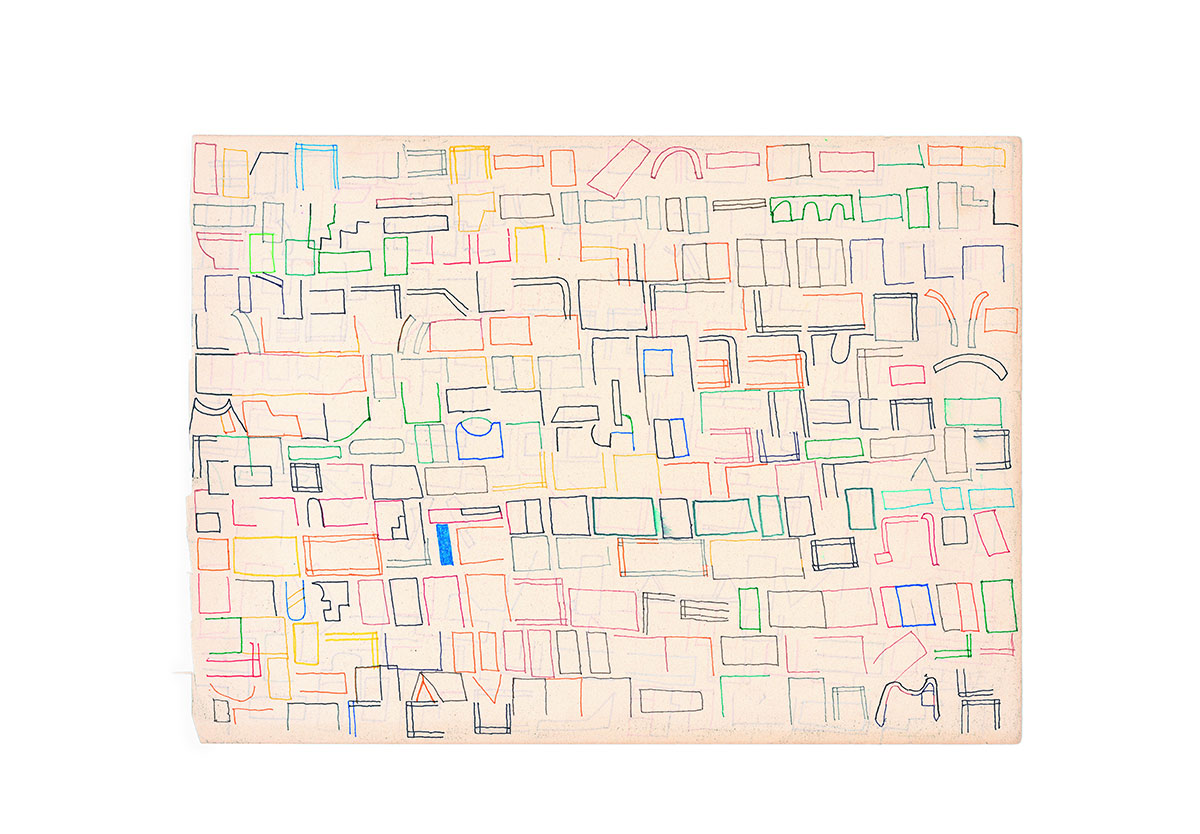
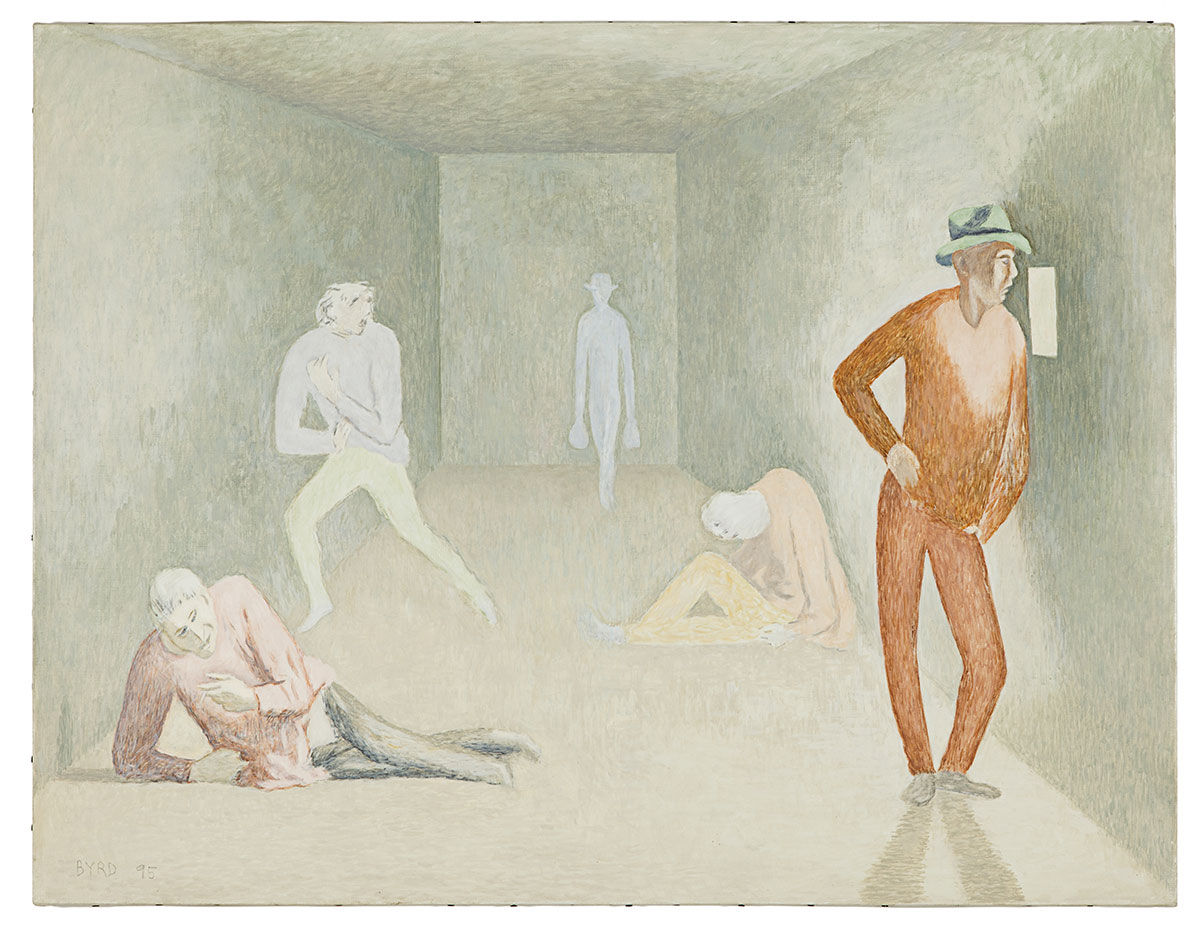
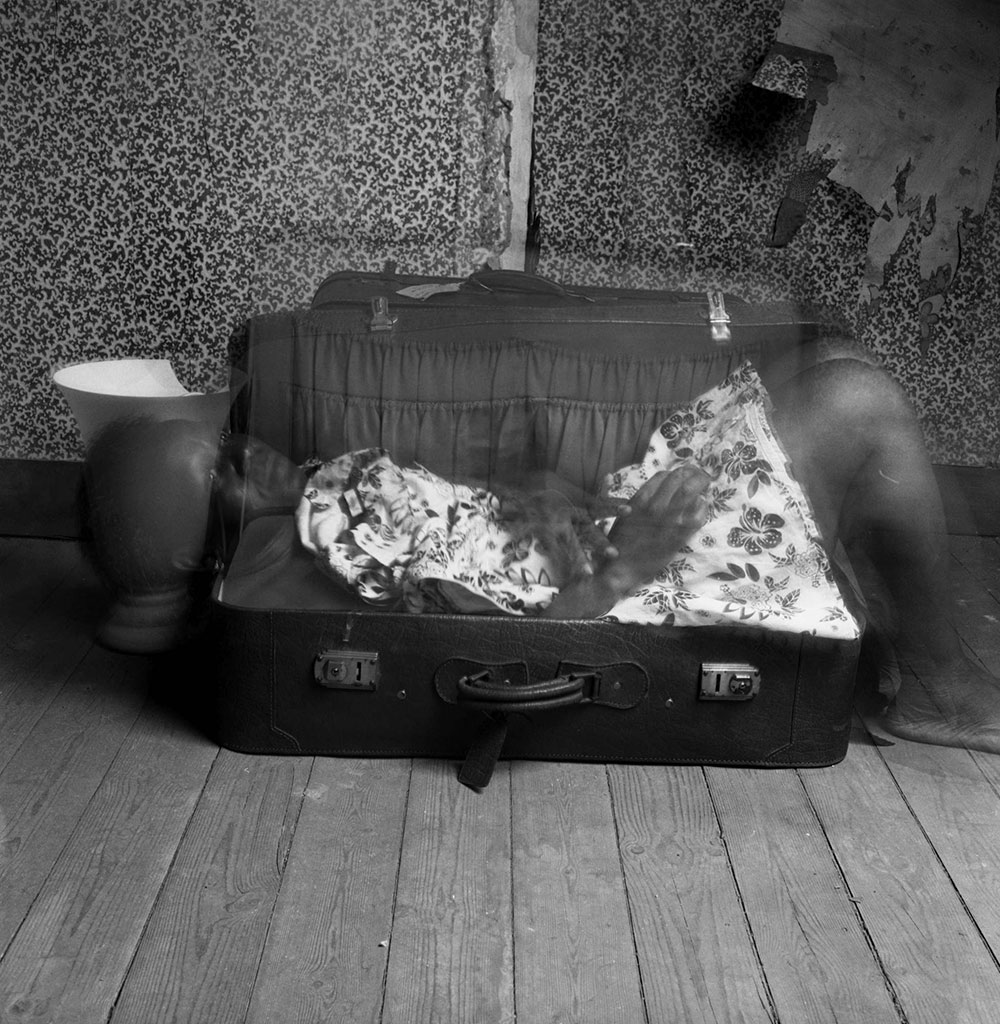
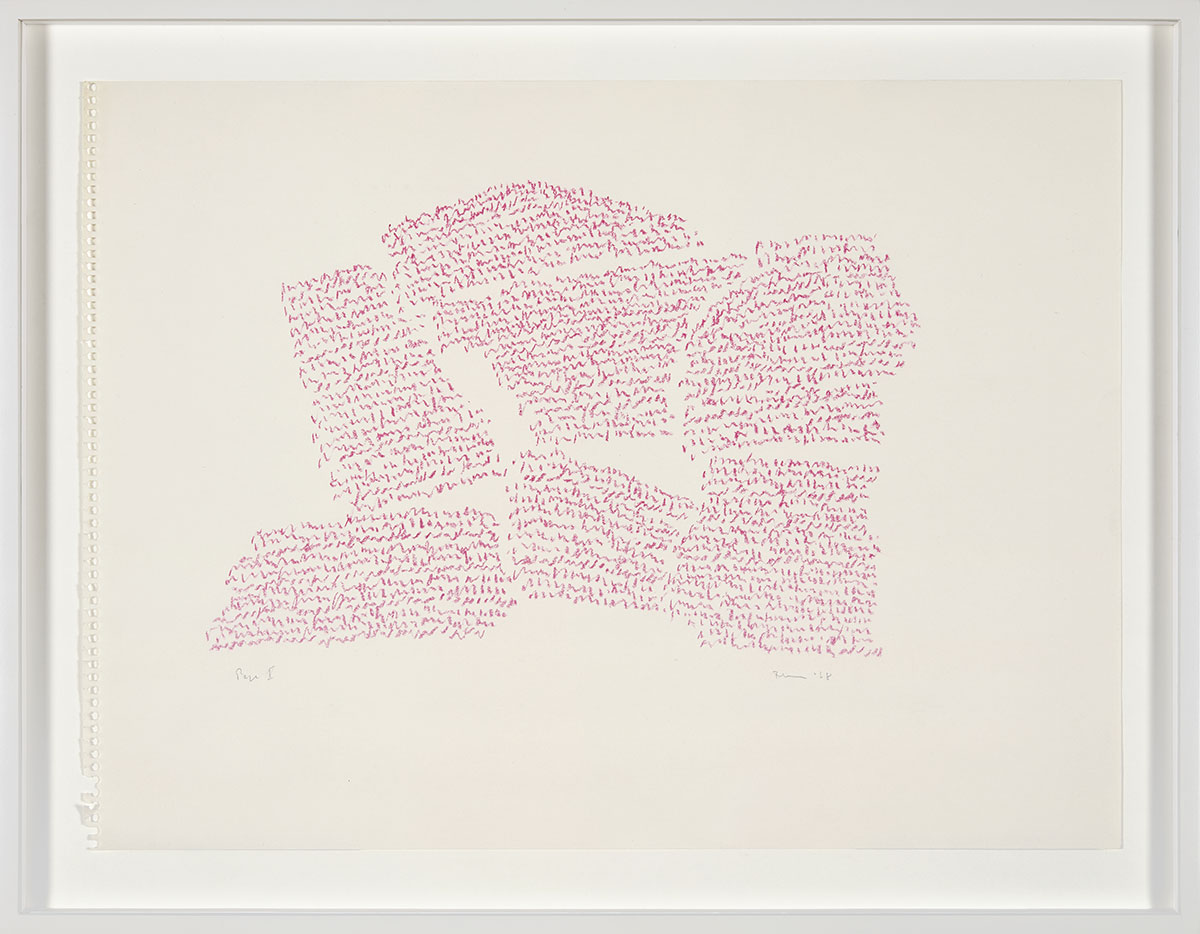
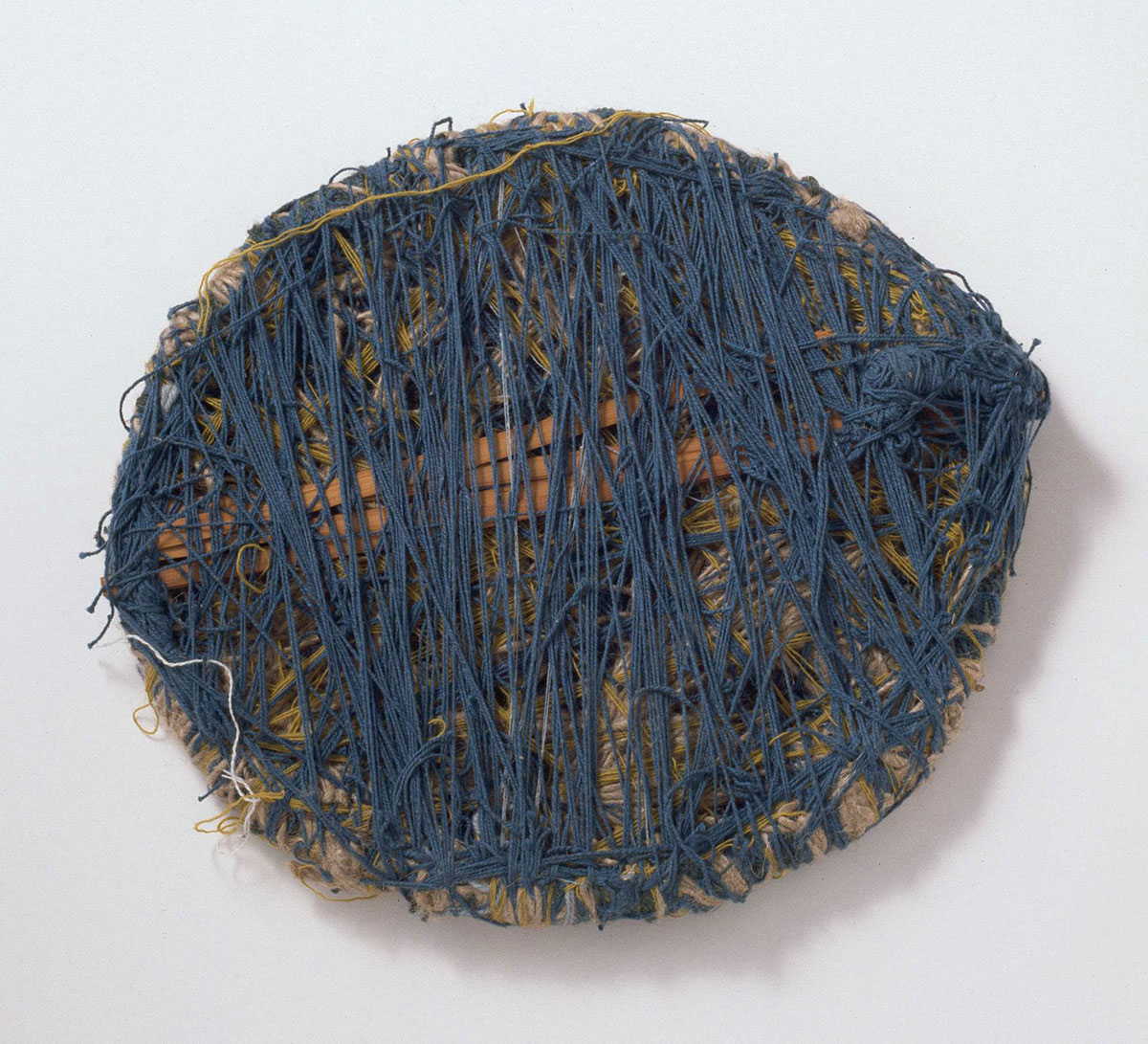
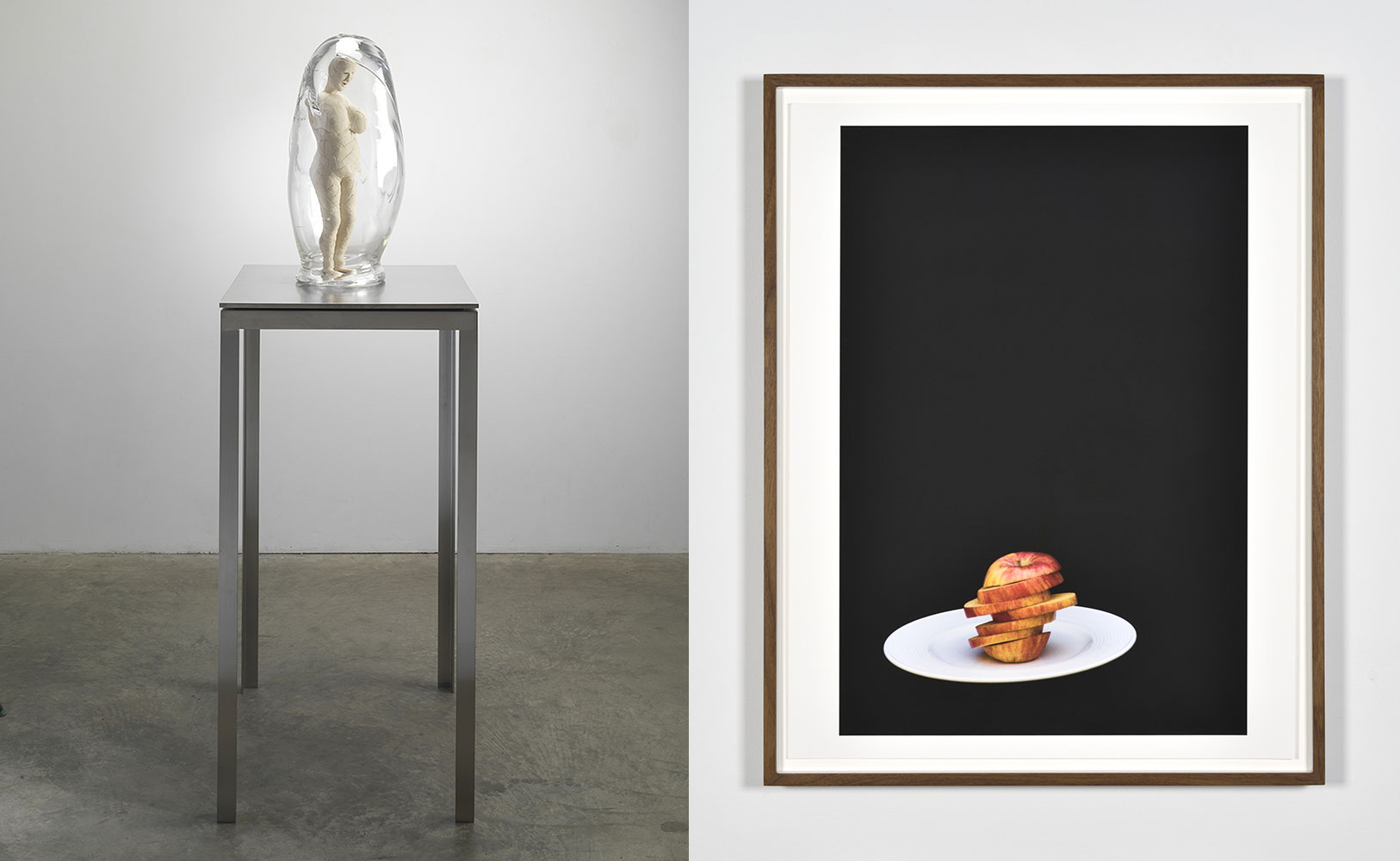
Right: Luciano Perna , May 26, 2020, 11:18 am, Architectural Apple, 2020, Courtesy Marian Goodman Gallery
